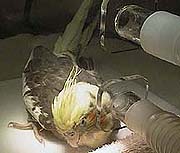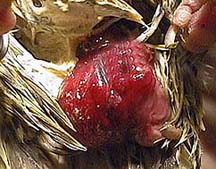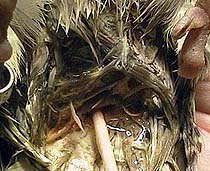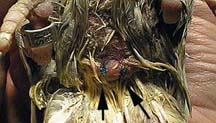I posted this yesterday in another forum with no responses. I need some advice, so I am bringing it here.
2/17/18
Hi everyone,
Today I noticed a 7 month Splash Marans with a prolapse. I cleaned her in some warm water and noticed that there was an egg in her prolapse. It wasn't very big, I would say a medium sized egg, and I had to maneuver it and gently stretch to get it out. The poor hen kept straining while I was helping her.
I have no Preparation H, I will have to get some tomorrow. I researched here a bit and used honey when I pushed it back in and put a lot on the outside of her vent. The only antibiotic I have is Teramycin and I put some in her water. I haven't given her food yet.
I'm worried about infection and she did have some bloody discharge.
Any advice would be helpful. I have her in a tote in the house.
Thanks!
2/18/13
Since yesterday afternoon, every time I check on her, she has prolapsed again. I haven't gave her food yet, but I know I will need to tomorrow. I have been using Preparation H, Honey and Triple Antibiotic Ointment, After I apply the ointment I have been using Preparation H wipes with Witch Hazel and holding it on the vent for several minutes. I think I have pushed the prolapse back at about 7 times. I don't feel any eggs and she continues to poop, even with no food.Maybe she was really backed up.
The last couple of times, she was straining to push it back out when I put it back in. Am I going to need to cull her? She seems in good spirits, (except when I am fixing her bum), scratches and wants to eat, and we are developing a nice bond. Marans are such friendly, mellow birds. I really have never spent a lot of time with this hen. She was raised by a broody.
Any advice would be helpful.I've never had this happen before.Should I feed her a normal diet? I put some rooster booster and Teramycin in her water.
We do not have a vet that would probably know what to do.
Thanks!
2/17/18
Hi everyone,
Today I noticed a 7 month Splash Marans with a prolapse. I cleaned her in some warm water and noticed that there was an egg in her prolapse. It wasn't very big, I would say a medium sized egg, and I had to maneuver it and gently stretch to get it out. The poor hen kept straining while I was helping her.
I have no Preparation H, I will have to get some tomorrow. I researched here a bit and used honey when I pushed it back in and put a lot on the outside of her vent. The only antibiotic I have is Teramycin and I put some in her water. I haven't given her food yet.
I'm worried about infection and she did have some bloody discharge.
Any advice would be helpful. I have her in a tote in the house.
Thanks!
2/18/13
Since yesterday afternoon, every time I check on her, she has prolapsed again. I haven't gave her food yet, but I know I will need to tomorrow. I have been using Preparation H, Honey and Triple Antibiotic Ointment, After I apply the ointment I have been using Preparation H wipes with Witch Hazel and holding it on the vent for several minutes. I think I have pushed the prolapse back at about 7 times. I don't feel any eggs and she continues to poop, even with no food.Maybe she was really backed up.
The last couple of times, she was straining to push it back out when I put it back in. Am I going to need to cull her? She seems in good spirits, (except when I am fixing her bum), scratches and wants to eat, and we are developing a nice bond. Marans are such friendly, mellow birds. I really have never spent a lot of time with this hen. She was raised by a broody.
Any advice would be helpful.I've never had this happen before.Should I feed her a normal diet? I put some rooster booster and Teramycin in her water.
We do not have a vet that would probably know what to do.
Thanks!
Last edited:








